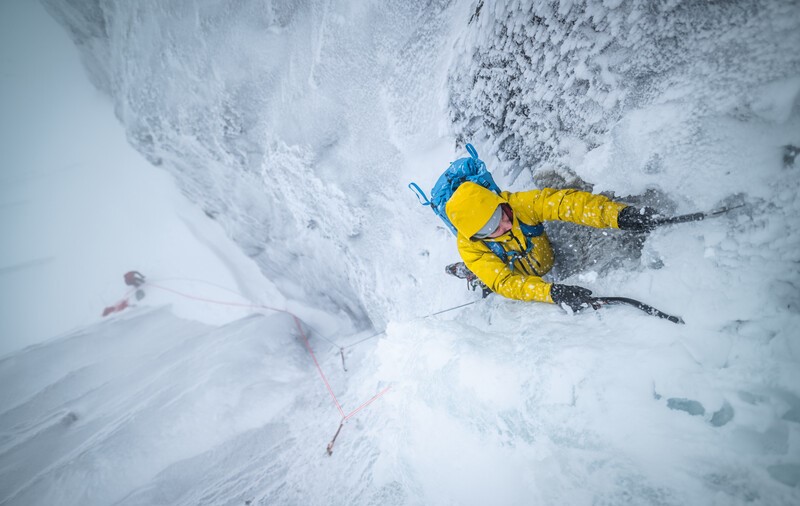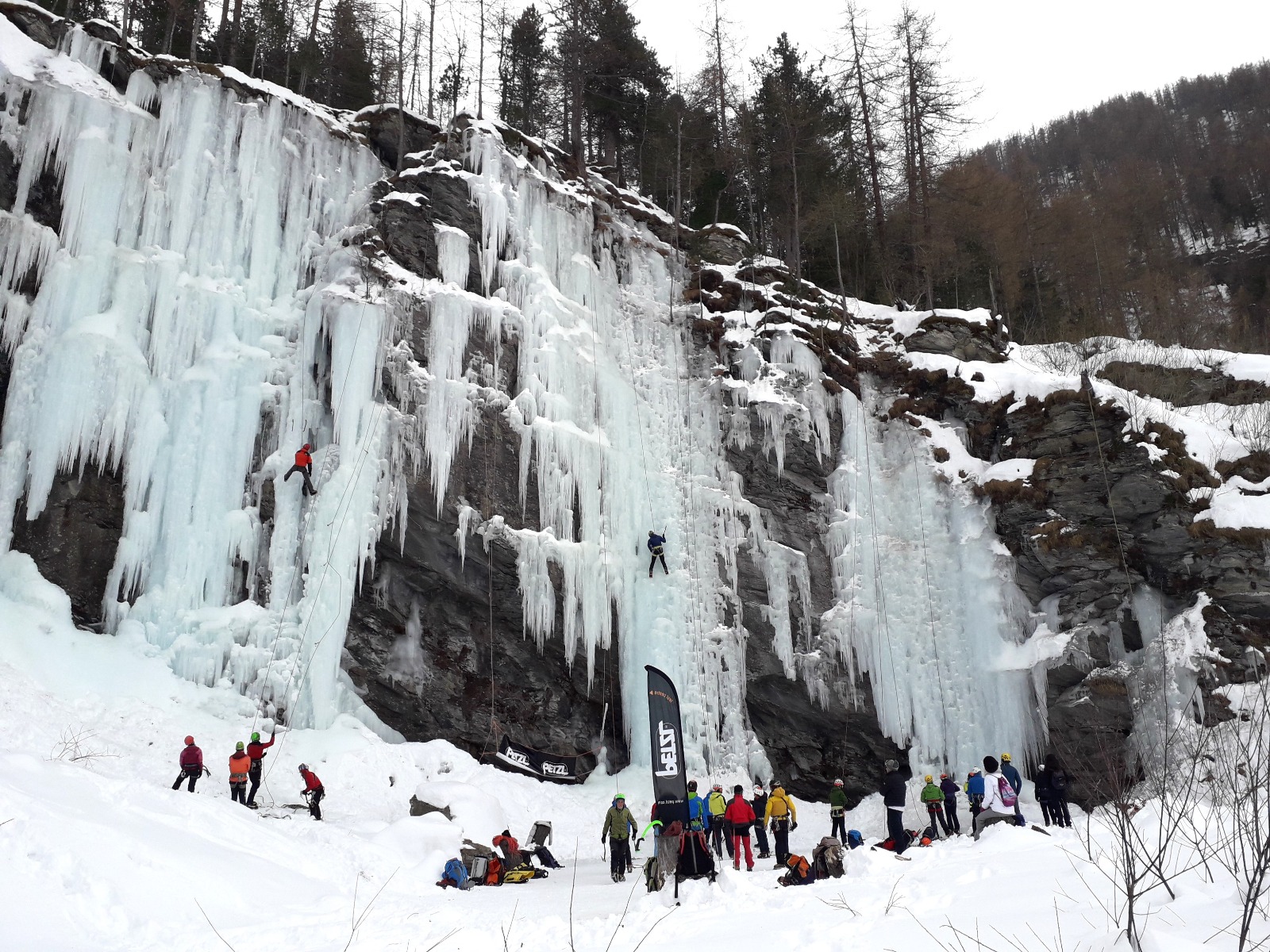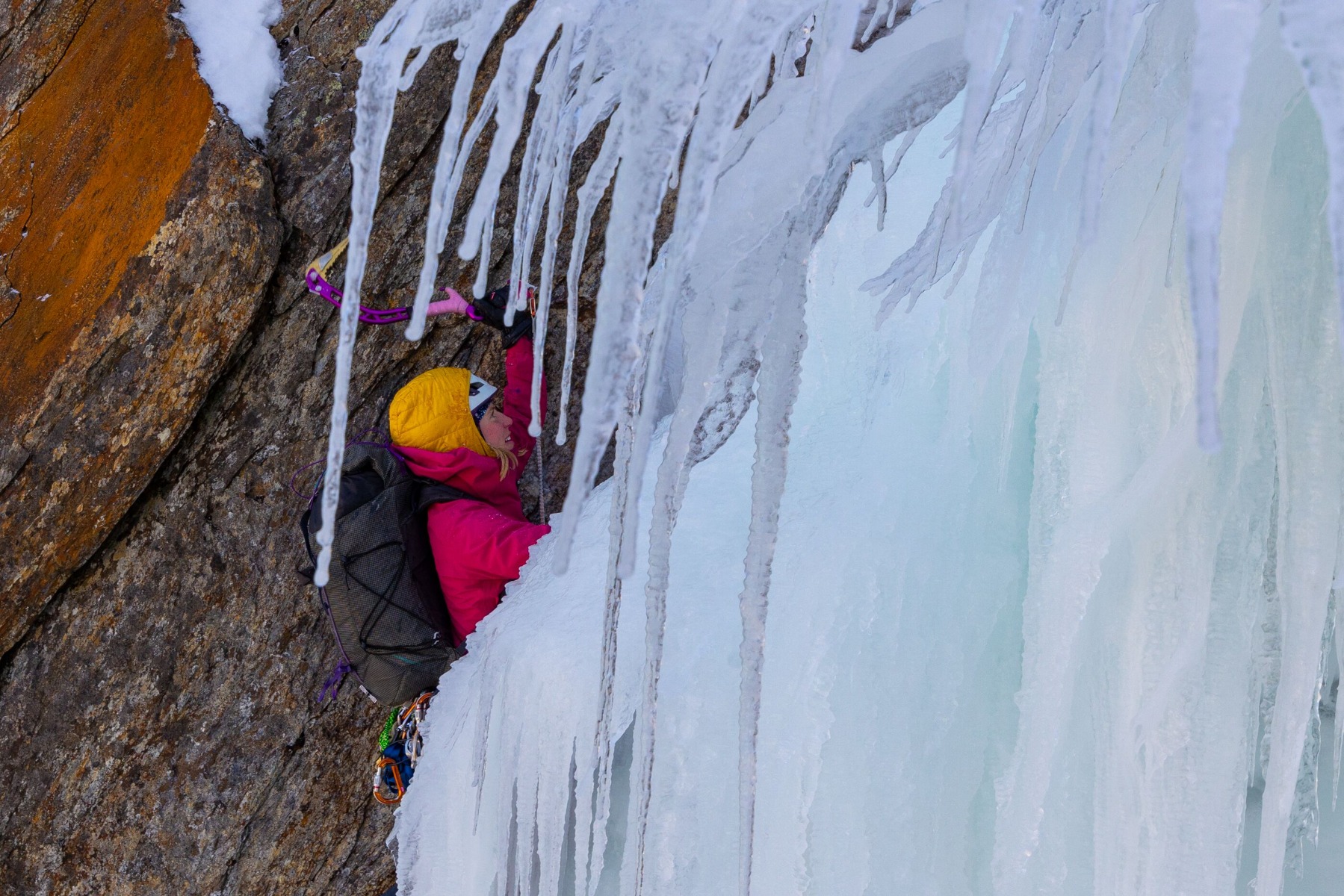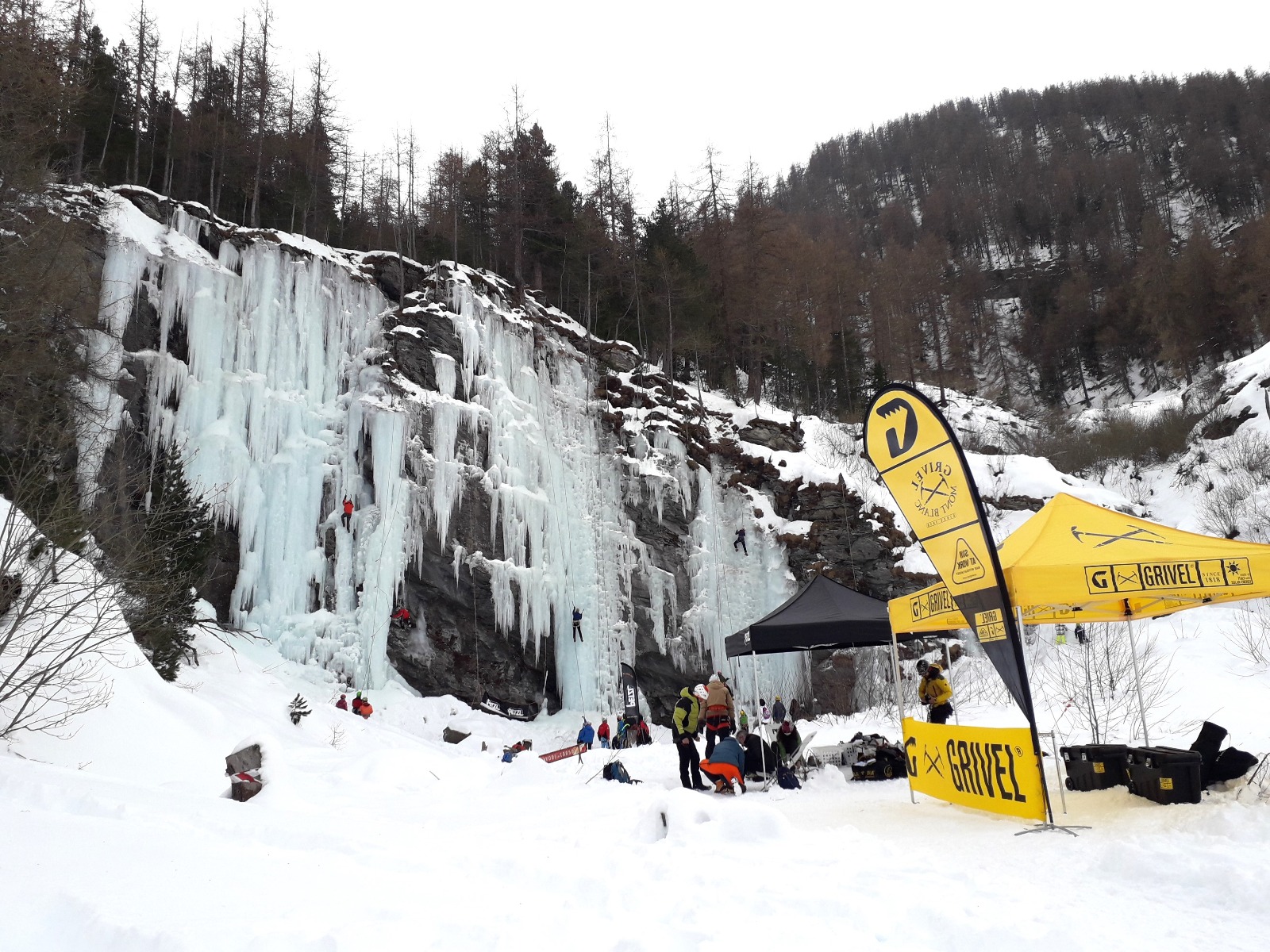Ice axes are essential tools when it comes to winter activities, ranging from hiking and ski touring, to mountaineering, dry tooling, and ice climbing. Depending on the intended use, your axes will vary in three key features: length, shaft shape, and materials.

Patrick Lalonde makes its way in a sea of ice in Mount Katahdin, Maine. Photo Brent Doscher, Patagonia
Length
- Short
Short ice axes are usually the most technical and compact axes on the market. They are perfect for those looking for lightweight and packable tools. They usually comprise a curved shaft which enhances performance and makes them the ideal pick for ice climbing. Some models are also designed for classic mountaineering and ski touring.
- Medium
For ski touring or intermediate technical hikes on snow and ice, we suggest choosing medium-length axes between 45 and 65 cm long. They will serve both as additional support and a key tool to ascend moderately steep iced waterfalls (piolet traction technique).
- Long
For steeper (but not yet vertical) hikes on snow and glacier traverses, you can opt for longer axes, between 70 and 75 cm long. You will use them mainly as additional support during the ascent, and eventually as self-braking tools in case of a fall. Longer axes will provide the maximum support on the snow, but of course, they will be bulkier and heavier if compared to 50 cm long ones.
Generally speaking, the steeper the terrain, the shorter the axe. To find the right axe size for you, we suggest holding it by its head, letting the spike dangle down toward the ground. The tip of the axe should be even with your ankle. This goes for mountaineering axes. Ice climbing axes have standard lengths while traverse ones should be about 70 cm long.

Testing Petzl ice tools during the Petzl Ice Academy in Val Varaita, Piedmont
Shaft shape
- Straight
Straight shafts are ideal for classic mountaineering, traverses on snow and ice, and intermediate technical hikes. They provide secure braking and exceptional balance support during ascents.
- Slightly curved
Slightly curved shafts are perfect for ski touring, technical mountaineering, and snow or mixed ascents. They serve as self-braking devices as well as support tools on the snow. On steep ice walls, they will help you perform pull-ups. Their slightly curved shape and the possibility to customize their components make these axes extremely versatile.
- Curved
Curved axes are the most technical ones. They are ideal for ice climbing and dry tooling, delivering exceptional traction and support thanks to their handle shape. The heads are adjustable and can be fully customized with weights or hammers for additional force.

Kelsey Rex deals with the right Patagonia equipment the ice fall "Parasol Gully NE12" in New Hampshire. Photo by Joe Klementovic, Patagonia
Pick curvature
Once again, the more curved the head is, the more technical the ice axe. A curved pick axe is also much easier to pull out of hard ice, while straight pick ones might easily get stuck. Curved pick axes are perfect for ice climbing and dry tooling, other models with straight and serrated picks can be used in classic mountaineering.

Grivel is also testing its ice tools in Ponte Chianale, Val Varaita, during Petzl Ice Academy 2019
Materials
- Steel
By far the most durable material, it’s also the heaviest. This could easily turn into an advantage point when you need to penetrate hard ice.
- Aluminum
Exceptionally light, axes made of aluminum are ideal for winter treks and traverses. Light axes are not great on ice and should not be used for ice climbing or vertical technical activities.
- Carbon
The most durable, long-lasting, and light material on the market. Carbon axes are quite expensive and are most suitable for highly technical activities such as dry tooling.

Kelsey Rex climbing "Parasol Gully NE12" in New Hampshire. Photo by Joe Klementovich, Patagonia.
Accessories
- Spike
An essential detail for mountaineering and winter hiking, but not essential for climbing. Ice climbing axes do not have a spike not only to save weight but also to make them safer to use.
- Adze
Adzes are used to cut steps or seats in snow or ice in mountaineering and winter hiking. To perform the piolet traction, climbers frequently use two different axes, one with an adze and the other with a hammer.
- Hammer
It is used uniquely on ice climbs, as it helps to pound pitons and snow pickets. Some axes come with a customizable head, allowing you to choose the right accessory depending on the activity.
- Blade
You can typically find blades on more technical axes, such as ice climbing and dry tooling ones, as they can easily penetrate hard ice. The serrated top edge provides extra support on mixed and dry tooling climbs.
- Leash
A leash helps secure your ice axe should you drop it during a climb. It is frequently included with hiking and mountaineering axes. There are different leash models, some can be tied around your wrist, and others can be fixed to your harness. You can use a leash as long as your axe comes with a hole in its shaft or head. Technical axes do not usually include this feature.
Petzl ice axes: precise and performing on ice
Can you hear the ice calling yet? Take a look at our ice axe and accessories selection!
Disclaimer: the intent of this article is uniquely informative and is not to be considered exhaustive. Please refer to the instruction manual for more specific information.
Cover image: climber Patrick Lalonde Mount Katahdin. Maine. Photo Brent Doscher

